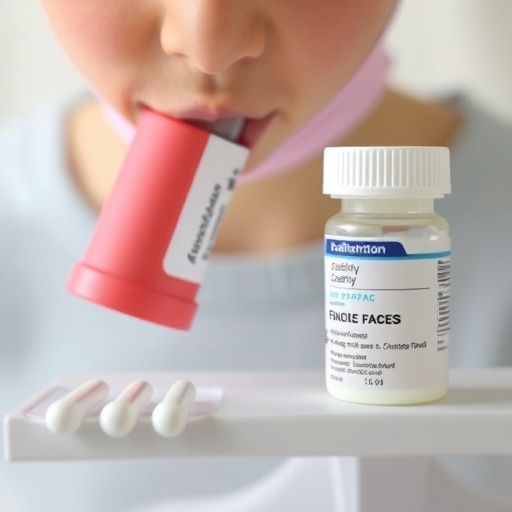In the delicate interplay of newborn physiology, few conditions pose as daunting a challenge as hypoxic ischemic encephalopathy (HIE), a devastating neurological disorder caused by oxygen deprivation during birth. Beyond the widely acknowledged brain injury, emerging evidence sheds light on a sinister and often overlooked companion complication: acute kidney injury (AKI). A groundbreaking study by Todo Bom Costa, S., Costa Reis, P., and Mendes Graça, A., published in the Journal of Perinatology in 2025, delves deeply into the enigmatic relationship between HIE and AKI in neonates, offering new insights into the risk factors and long-term outcomes of this dual pathology.
This study rigorously examined neonates suffering from HIE with a particular focus on the incidence and predictors of acute kidney injury. Utilizing two distinct classification systems—the Kidney Disease: Improving Global Outcomes (KDIGO) and the Gupta definitions—the researchers sought to delineate AKI more precisely within this vulnerable population. Such dual-framework analysis provides an unprecedented level of detail, addressing the diagnostic ambiguities that have historically hampered understanding in neonatal AKI associated with encephalopathy.
The pathophysiology underlying AKI in the context of HIE is complex and multifactorial. Perinatal asphyxia results in systemic hypoxia and ischemia, which disrupt renal perfusion and precipitate direct tubular injury. Furthermore, the systemic inflammatory cascade triggered by hypoxic insults exacerbates the damage, perpetuating kidney dysfunction. However, the exact clinical and biochemical markers predictive of AKI development in HIE infants remained unclear until this thorough investigation.
.adsslot_rYpWbnJk8X{width:728px !important;height:90px !important;}
@media(max-width:1199px){ .adsslot_rYpWbnJk8X{width:468px !important;height:60px !important;}
}
@media(max-width:767px){ .adsslot_rYpWbnJk8X{width:320px !important;height:50px !important;}
}
ADVERTISEMENT
From a cohort of neonates admitted with HIE, the study meticulously evaluated those who developed AKI according to both the KDIGO and Gupta criteria. This comparative approach not only enriched the sensitivity of AKI detection but also underscored discrepancies and potential limitations inherent in each definitional framework. The findings revealed a significant prevalence of AKI in HIE patients, profoundly impacting their immediate clinical trajectory.
One of the novel elements of the research was its detailed analysis of risk factors for AKI in the context of neonatal HIE. Contrary to earlier assumptions that solely severe hypoxic injury predicted kidney complications, the authors identified a constellation of variables including gestational age, birth weight, the severity of encephalopathy, and specific biochemical parameters that robustly correlated with heightened AKI risk. This multidimensional risk profiling opens avenues for earlier identification and tailored clinical interventions aimed at renal protection.
The implications of these findings resonate far beyond the neonatal intensive care unit. Acute kidney injury in newborns is not merely a transient aberration of renal function; it can herald chronic kidney disease and hypertension later in life. Recognizing AKI early in HIE newborns, therefore, is not only critical for immediate management but also for strategizing long-term follow-up and care to mitigate future renal morbidity.
Perhaps one of the most compelling contributions of this study lies in its longitudinal assessment of kidney outcomes post-hospitalization. By following neonates with HIE-associated AKI over an extended period, the researchers documented persistent renal impairment in a significant proportion, reinforcing the argument for vigilant ongoing surveillance. This long-term perspective challenges the traditional notion of neonatal AKI as a reversible and self-limited event.
Technical innovations employed in this research include the integration of advanced biomarker analysis alongside conventional serum creatinine measurements. These biomarkers, including novel urinary proteins indicative of tubular damage, enhanced the resolution of AKI diagnosis and provided early warnings even before overt clinical signs appeared. This underscores a paradigm shift toward precision medicine in neonatal care, where molecular diagnostics augment traditional clinical assessments.
Additionally, the study emphasized the limitations of relying solely on serum creatinine criteria, especially in neonates where maternal creatinine influence and low muscle mass confound readings. By applying the Gupta definition, which incorporates urine output and alternative biochemical markers, the authors demonstrated improved accuracy in AKI diagnosis, advocating for broader adoption of such comprehensive criteria in clinical practice.
Beyond diagnostics, the research also touched upon therapeutic implications. The correlation between AKI development and adverse neurologic outcomes in HIE suggests that renal injury may not merely be a bystander but an active participant in systemic disease progression. This insight propels the argument for integrative care approaches that address both brain and kidney protection simultaneously, potentially through modulating inflammatory pathways and optimizing fluid management.
Furthermore, the study challenges clinicians and researchers to reconsider current protocols in neonatal units, emphasizing the necessity for standardized AKI screening in all HIE patients. The authors propose that early detection coupled with supportive renal care could improve mortality and morbidity outcomes, although they acknowledge the need for randomized trials to establish definitive interventions.
From a broader scientific perspective, this work fills a critical gap in neonatal renal medicine, offering a robust dataset that informs future research directions. It paves the way for exploring mechanistic pathways linking cerebral hypoxia to renal tubular injury, potentially identifying novel therapeutic targets. Moreover, it highlights the importance of multidisciplinary collaboration in managing complex neonatal syndromes.
In summary, the study by Todo Bom Costa and colleagues represents a significant leap forward in neonatal care by elucidating the risk factors and outcomes of AKI in neonates with hypoxic ischemic encephalopathy. Their use of dual diagnostic criteria, comprehensive risk assessment, and long-term follow-up redefines how clinicians understand and approach renal complications in this fragile population. The findings not only underscore the clinical necessity for vigilant kidney monitoring but also ignite hope for improved strategies to safeguard the renal health of the youngest patients.
As neonatal intensive care continues to evolve, implementing these insights could transform prognostic frameworks and therapeutic pathways, attenuating the burden of AKI and preventing its grave sequelae. This landmark investigation serves as a clarion call to the medical community, advocating for heightened awareness, refined diagnostics, and integrated care approaches to confront one of the most insidious complications in neonatal HIE.
The intricate tapestry woven by brain and kidney injuries in newborns emerges more clearly from this research, demanding a nuanced understanding that transcends traditional boundaries. As the scientific and medical communities absorb these crucial findings, the hope for mitigating the devastating impact of hypoxic ischemic encephalopathy and its renal consequences shines brighter than ever.
Subject of Research: Risk factors and long-term outcomes of acute kidney injury in neonates with hypoxic ischemic encephalopathy
Article Title: Evaluation of risk factors and outcomes of neonates with hypoxic ischemic encephalopathy and acute kidney injury
Article References:
Todo Bom Costa, S., Costa Reis, P. & Mendes Graça, A. Evaluation of risk factors and outcomes of neonates with hypoxic ischemic encephalopathy and acute kidney injury.
J Perinatol (2025). https://doi.org/10.1038/s41372-025-02379-x
Image Credits: AI Generated
DOI: https://doi.org/10.1038/s41372-025-02379-x
Tags: acute kidney injury in newbornsdual framework analysis in medical researchGupta definitions for acute kidney injuryJournal of Perinatology research findingsKDIGO classification for AKIlong-term outcomes of HIEneonatal hypoxic-ischemic encephalopathyneurological disorders in newbornspathophysiology of neonatal AKIperinatal asphyxia and kidney damagerenal injury in neonatesrisk factors for neonatal AKI





